John Hervey Crozier was an American attorney and politician active primarily in Knoxville, Tennessee, USA, during the mid-nineteenth century. Described as "an orator of uncommon brilliancy" and "one of the brainiest men ever sent by Tennessee to congress," Crozier represented Tennessee's 3rd congressional district in the United States House of Representatives from 1845 to 1849. While originally a member of the Whig Party, Crozier switched his allegiance to the Democratic Party in the 1850s, and supported the Confederacy during the Civil War. Crozier retired from public life after the war, and spent his remaining years engaged in scholarly pursuits.

The Knoxville Gazette was the first newspaper published in the U.S. state of Tennessee and the third published west of the Appalachian Mountains. Established by George Roulstone (1767–1804) at the urging of Southwest Territory governor William Blount, the paper's first edition appeared on November 5, 1791. The Gazette provided an important medium through which Tennessee's frontier government could dispense legislative announcements, and the paper's surviving editions are now an invaluable source of information on life in early Knoxville.

Statesview, or States View, is a historic house located on South Peters Road off Kingston Pike in Knoxville, Tennessee, United States. Built in 1805 by early Knoxville architect Thomas Hope and rebuilt in 1823 following a fire, Statesview was originally the home of surveyor Charles McClung (1761–1835). Following McClung's death, newspaper publisher Frederick Heiskell (1786–1882) purchased the house and estate, which he renamed "Fruit Hill." The house is listed on the National Register of Historic Places for its architecture and political significance.

The James Park House is a historic house located at 422 West Cumberland Avenue in Knoxville, Tennessee, United States. The house's foundation was built by Governor John Sevier in the 1790s, and the house itself was built by Knoxville merchant and mayor, James Park (1770–1853), in 1812, making it the second-oldest building in Downtown Knoxville after Blount Mansion. The house is listed on the National Register of Historic Places, and currently serves as the headquarters for the Gulf and Ohio Railways.
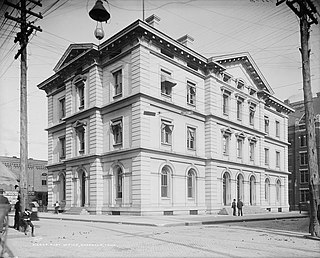
The Old Customs House, also called the Old Post Office, is a historic building located at the corner of Clinch Avenue and Market Street in Knoxville, Tennessee, United States. Completed in 1874, it was the city's first federal building. It housed the federal courts, excise offices and post office until 1933. From 1936 to 1976, it was used by the Tennessee Valley Authority for offices. Expanded in 2004, the building is home to the East Tennessee History Center, which includes the Lawson McGhee Library's Calvin M. McClung Historical Collection, the Knox County Archives, and the East Tennessee Historical Society's headquarters and museum. The building is listed on the National Register of Historic Places for its architectural significance.
This is a list of the National Register of Historic Places listings in Knox County, Tennessee.

Charles McClung McGhee was an American industrialist and financier, active primarily in Knoxville, Tennessee, in the latter half of the nineteenth century. As director of the East Tennessee, Virginia and Georgia Railway (ETV&G), McGhee was responsible for much of the railroad construction that took place in the East Tennessee area in the 1870s and 1880s. His position with the railroad also gave him access to northern capital markets, which he used to help finance dozens of companies in and around Knoxville. In 1885, he established the Lawson McGhee Library, which was the basis of Knox County's public library system.

Enoch Lloyd Branson (1853–1925) was an American artist best known for his portraits of Southern politicians and depictions of early East Tennessee history. One of the most influential figures in Knoxville's early art circles, Branson received training at the National Academy of Design in the 1870s and subsequently toured the great art centers of Europe. After returning to Knoxville, he operated a portrait shop with photographer Frank McCrary. He was a mentor to fellow Knoxville artist Catherine Wiley, and is credited with discovering twentieth-century modernist Beauford Delaney.

The Fidelity Building is an office building in Knoxville, Tennessee, United States. Initially constructed in 1871 for the wholesale firm Cowan, McClung and Company, the building underwent an exterior renovation and was converted to Fidelity-Bankers Trust Company in 1929 and has since been renovated for use as office space. In 1984, the building was added to the National Register of Historic Places for its architecture and its role in Knoxville's late-nineteenth century wholesaling industry.
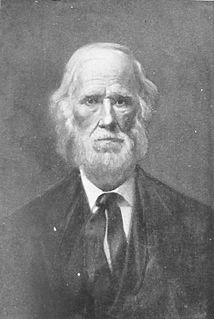
James Gettys McGready Ramsey was an American historian, physician, planter, slave owner, and businessman, active primarily in East Tennessee during the nineteenth century. Ramsey is perhaps best known for his book, The Annals of Tennessee to the End of the Eighteenth Century, a seminal work documenting the state's frontier and early statehood periods. Ramsey was also a major advocate for development in East Tennessee, leading efforts to bring railroad access to the region, and helping to organize the region's first medical society.
Thomas Hope was an English-born American architect and house joiner, active primarily in Knoxville, Tennessee, during the late eighteenth and early nineteenth centuries. Trained in London, Hope moved to Knoxville in 1795, where he designed and built several of the city's earliest houses. At least two houses built by Hope— the Ramsey House (1797) in East Knoxville and Statesview in West Knoxville— are still standing, and have been listed on the National Register of Historic Places.
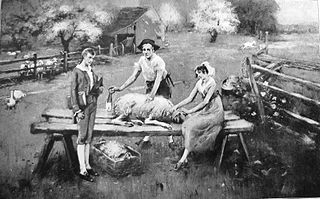
Samuel Czar Carrick was an American Presbyterian minister who was the first president of Blount College, the educational institution to which the University of Tennessee traces its origin.
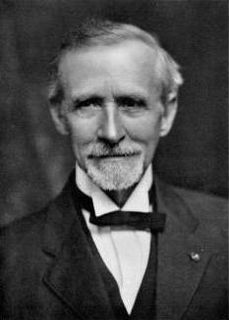
William Rule was an American newspaper editor and politician, best known as the founder of The Knoxville Journal, which was published in Knoxville, Tennessee, from 1870 until 1991. A protégé of vitriolic newspaper editor William G. "Parson" Brownlow, Rule established the Journal as a successor to Brownlow's Knoxville Whig. Rule twice served as mayor of Knoxville, and published the city's first comprehensive history, Standard History of Knoxville, in 1900.
James Churchwell Luttrell II was an American attorney and politician who served as Mayor of Knoxville, Tennessee, during the Civil War. His eight-year term (1859–1867) was the longest for any Knoxville mayor until the late 20th century, when it was surpassed by Victor Ashe's 16-year term. Luttrell also served as state comptroller in the late 1850s, and was elected to the state senate following his term as mayor.
The Knoxville Register was an American newspaper published primarily in Knoxville, Tennessee, during the 19th century. Founded in 1816, the paper was East Tennessee's dominant newspaper until 1863, when its pro-secession editor, Jacob Austin Sperry (1823–1896), was forced to flee advancing Union forces at the height of the Civil War. Sperry continued to sporadically publish the Register in Atlanta, and later Bristol, until he was finally captured by Union forces in December 1864.

The Medical Arts Building is an office high-rise located at 603 Main Street in Knoxville, Tennessee, United States. Completed in 1931, the 10-story structure originally provided office space for physicians and dentists, and at the time was considered the "best equipped" medical building in the South. The building has been listed on the National Register of Historic Places as one of the region's best examples of a Gothic Revival-style office building. It has recently been renovated into mixed-use, principally residential use.
Charles Warner Cansler was an American educator, civil rights advocate, and author, active primarily in Knoxville, Tennessee, USA. A grandson of William Scott, a pioneering Black American publisher, and the son of Knoxville's first Black American teacher, Cansler was instrumental in establishing educational opportunities for Knoxville's Black American children in the late 19th and early 20th centuries. His 1940 biography, Three Generations: The Story of a Colored Family in Eastern Tennessee, remains an important account of black life in 19th century East Tennessee.

The History of Knoxville, Tennessee, began with the establishment of James White's Fort on the Trans-Appalachian frontier in 1786. The fort was chosen as the capital of the Southwest Territory in 1790, and the city, named for Secretary of War Henry Knox, was platted the following year. Knoxville became the first capital of the State of Tennessee in 1796, and grew steadily during the early 19th century as a way station for westward-bound migrants and as a commercial center for nearby mountain communities. The arrival of the railroad in the 1850s led to a boom in the city's population and commercial activity.

Mary Boyce Temple was an American philanthropist and socialite, active primarily in Knoxville, Tennessee, in the late 19th and early 20th centuries. She was the first president of the Ossoli Circle, the oldest federated women's club in the South, and published a biography of the club's namesake, Margaret Fuller Ossoli, in 1886. She also cofounded the Tennessee Woman's Press and Author's Club, the Knoxville Writer's Club, and the Knox County chapter of the League of Women Voters. She represented Tennessee at various international events, including the Paris Exposition of 1900 and at the dedication of the Panama Canal in 1903.
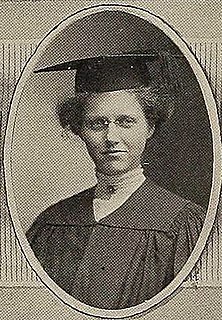
Mary Utopia Rothrock, was an American librarian and historian.













